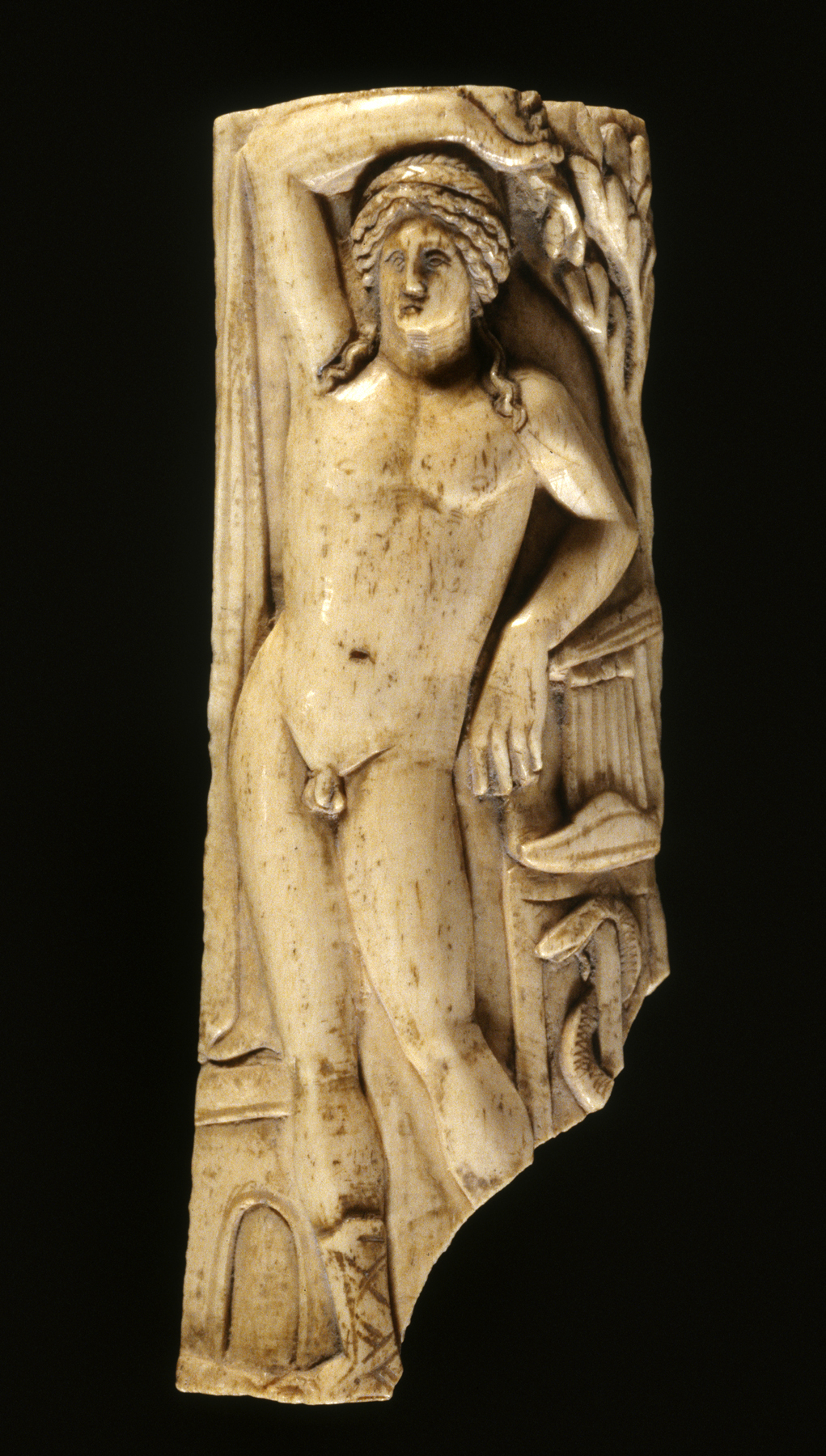Plaque with Apollo
Following the traditions of Greek sculpture, Apollo is shown leaning languidly against a tree with one arm resting on his lyre (harp). His right arm is raised over his head, throwing a cloak over his shoulders. This type of Apollo figure derives from the Apollot Lykeios of Praxiteles and was repeated often in Egyptian works. A similar pose, however, is often used to depict Dionysus, and in the case of some objects, it is difficult to differentiate between the two gods. Mythological figures, although pagan, continued to be used as decorative motifs in Christian Egypt as a sign of upper-class learning and culture. The curve of the plaque reflects the shape of the bone from which it was carved. Bone carvings such as this one, especially when related to festive Dionysian rites, were used in Early Byzantine Egypt from the fourth through sixth century to decorate secular furnishings.
Provenance
Provenance (from the French provenir, 'to come from/forth') is the chronology of the ownership, custody, or location of a historical object. Learn more about provenance at the Walters.
Alexandre Polovtsoff (Aleksandr Aleksandrovich Polovtsov), Paris, by purchase; Henry Walters, Baltimore, 1928, by purchase; Walters Art Museum, 1931, by bequest.
Exhibitions
| 1989 | Beyond the Pharaohs: Egypt and the Copts in the Second to Seventh Centuries A.D.. Museum of Art, Rhode Island School of Design, Providence; The Walters Art Gallery, Baltimore. |
| 1947 | Early Christian and Byzantine Art. Baltimore Museum of Art, Baltimore. |
Geographies
Egypt (Place of Origin)
Measurements
5 3/4 x 2 3/16 x 13/16 in. (14.7 x 5.5 x 2 cm)
Credit Line
Acquired by Henry Walters, 1928
Location in Museum
Accession Number
In libraries, galleries, museums, and archives, an accession number is a unique identifier assigned to each object in the collection.
In libraries, galleries, museums, and archives, an accession number is a unique identifier assigned to each object in the collection.
71.43


